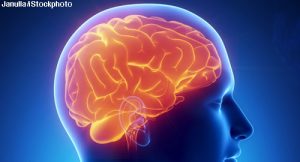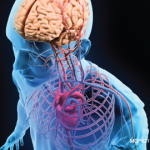 SAN DIEGO—Functional magnetic resonance imaging (fMRI), which uses magnetic properties of oxygenated and deoxygenated blood as an indirect measure of neuronal activity, is helping researchers understand how disease activity in lupus affects brain function, said an expert in a session at ACR Convergence 2023.
SAN DIEGO—Functional magnetic resonance imaging (fMRI), which uses magnetic properties of oxygenated and deoxygenated blood as an indirect measure of neuronal activity, is helping researchers understand how disease activity in lupus affects brain function, said an expert in a session at ACR Convergence 2023.
This session covered the latest findings on fMRI, which is giving researchers a look at the brain fog often described by patients with lupus. Experts also presented a description of the latest research into the role of microglia in neuropsychiatric lupus.
New Insights
Ian Bruce, MD, professor of rheumatology and director of the National Institute for Health and Care Research (NIHR) Manchester Biomedical Research Center, University of Manchester, U.K., said the field is making strides in an area that has not been properly addressed for lupus.
“Up to 80% of patients [with lupus] get some kind of neuropsychiatric involvement at some point,” he said. This involvement is most commonly headache, mood disorders and cognitive dysfunction. Researchers have been attempting to measure cognitive dysfunction in lupus more uniformly and define phenotypes so patients can experience improvement in their cognitive symptoms.
Using the Cambridge Neuropsychological Test Automated Battery (CANTAB), researchers found that patients with lupus have lower sustained attention tendency and take longer on processes involving emotion than healthy controls. In this study, researchers used fMRI to assess patients’ attention, working memory and face emotion recognition. When compared with healthy controls, patients with lupus had reduced attention that was associated with interleukin (IL) 6 levels and disease activity on the British Isles Lupus Assessment Group (BILAG) index.1
This research also found reduced performance in the working memory of patients with lupus than controls. This reduction was linked with mood, the inflammation-associated adhesion protein VCAM-1 and the Systemic Lupus International Collaborating Clinics (SLICC) damage index. Patients with lupus were also slower to respond to faces demonstrating sadness, and this finding was linked to the SLICC damage index and disease duration.2
Researchers also looked at the default mode network—the brain network that stays busy while someone is not actively engaged in tasks, such as when daydreaming. This network is suppressed or attenuated when concentrating on a task. They found that patients with lupus experiencing flare have much less attenuation of the default mode network during a task than those with stable disease.1,2
In another aspect of this study, they examined functional connectivity between brain regions when patients were in a resting state. They found no difference in this connectivity for patients with flare compared with non-flare patients; however, they found lower levels for patients with lupus overall when compared with controls. Additionally, they found that mood was a significant predictor of this connectivity but accounted for only about 20% of the difference.1,2

